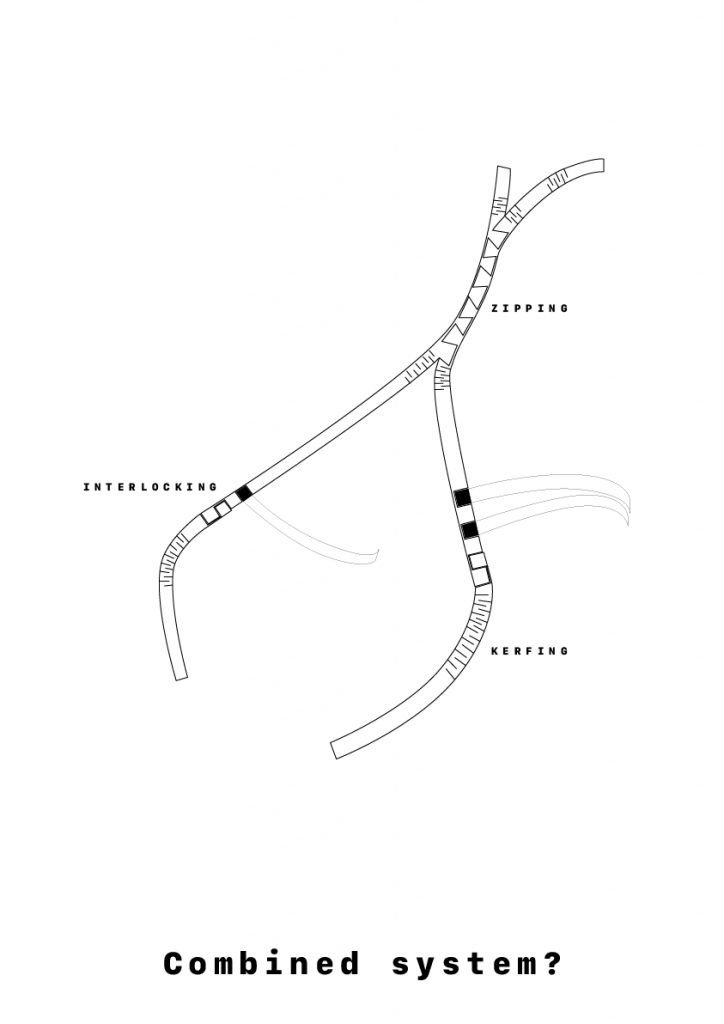After working with swarming agents that produced linear curves in the first part of this project, I decided that I wanted to continue exploring linear shapes further in the fabrication part of the process.
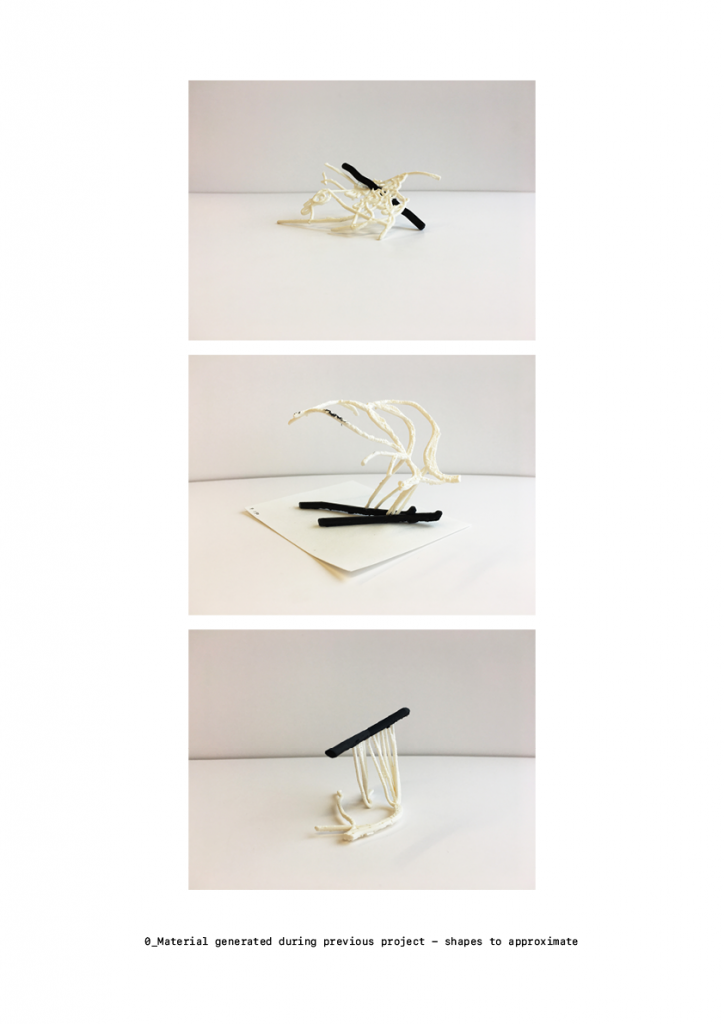
One of the first things I tried during the week was make simplified interpretations of some of the shapes produced during the previous part of the project using strips of paper. However, since the thickness of paper is negligible, it has properties and a flexibility that no full-scale material can emulate. This led me to choose a more specific material to have in mind when continuing the testing. I chose to research wood, and different methods that can be used to make wood flexible.
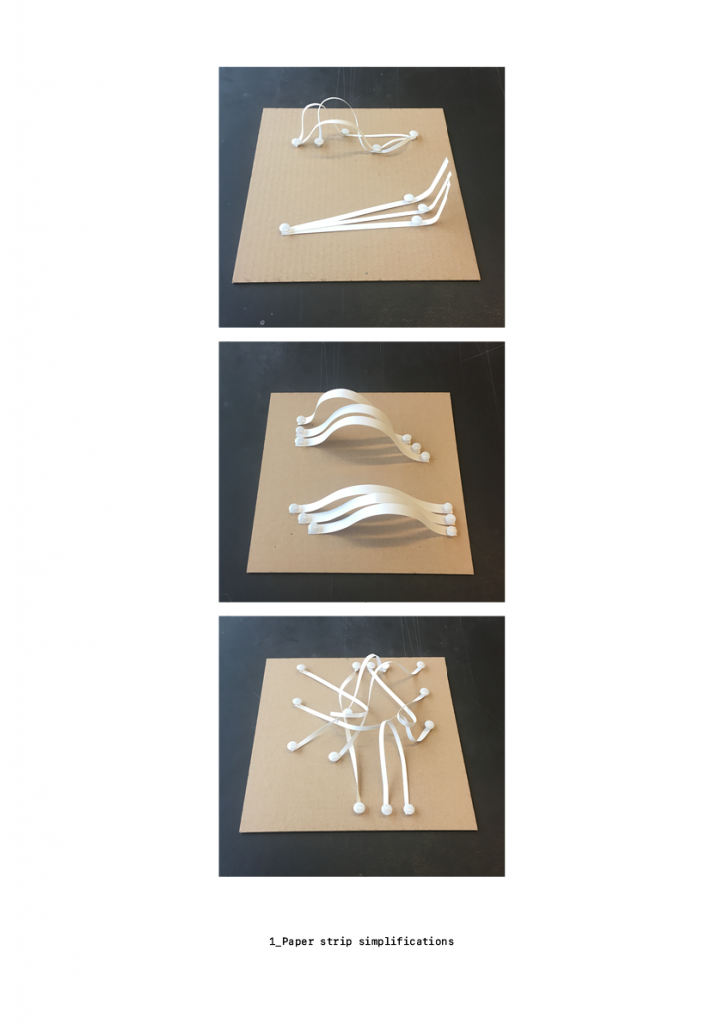
In summary, I have explored three methods of working with wood to produce flexible, three-dimensional shapes. These methods are zipping (based on a concept by Schindlersalmerón), kerfing and interlocking.
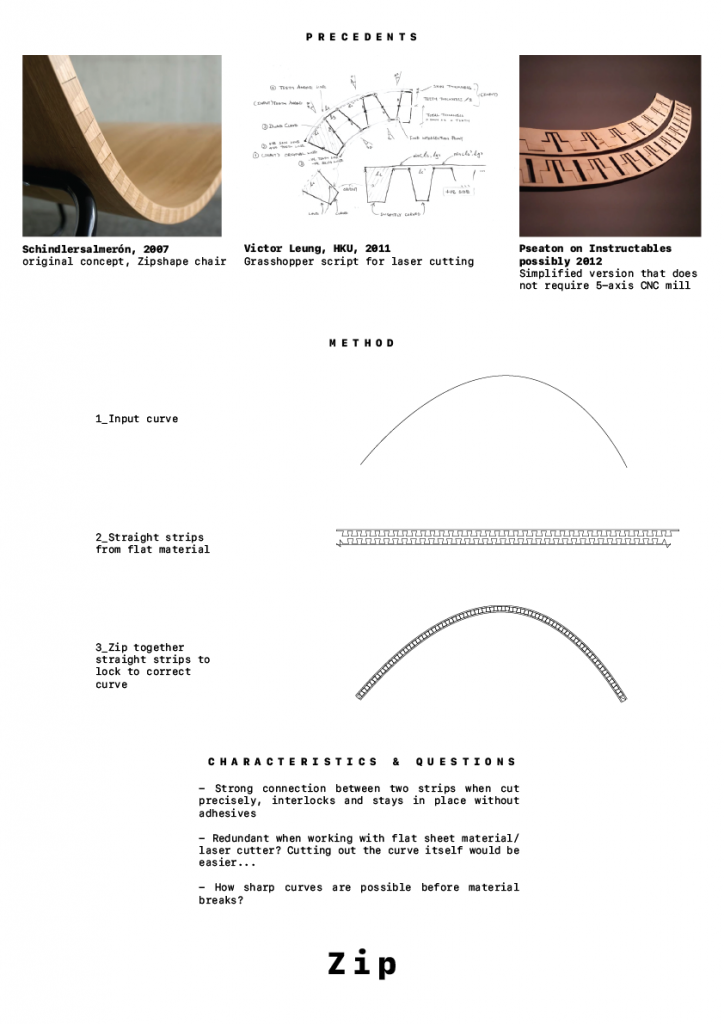
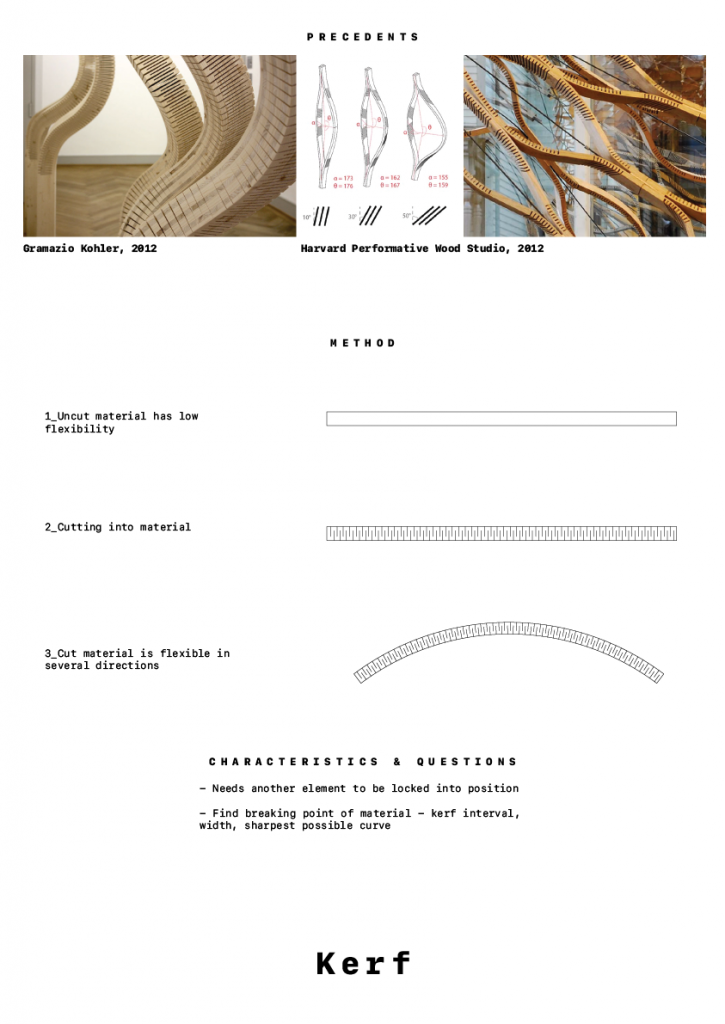
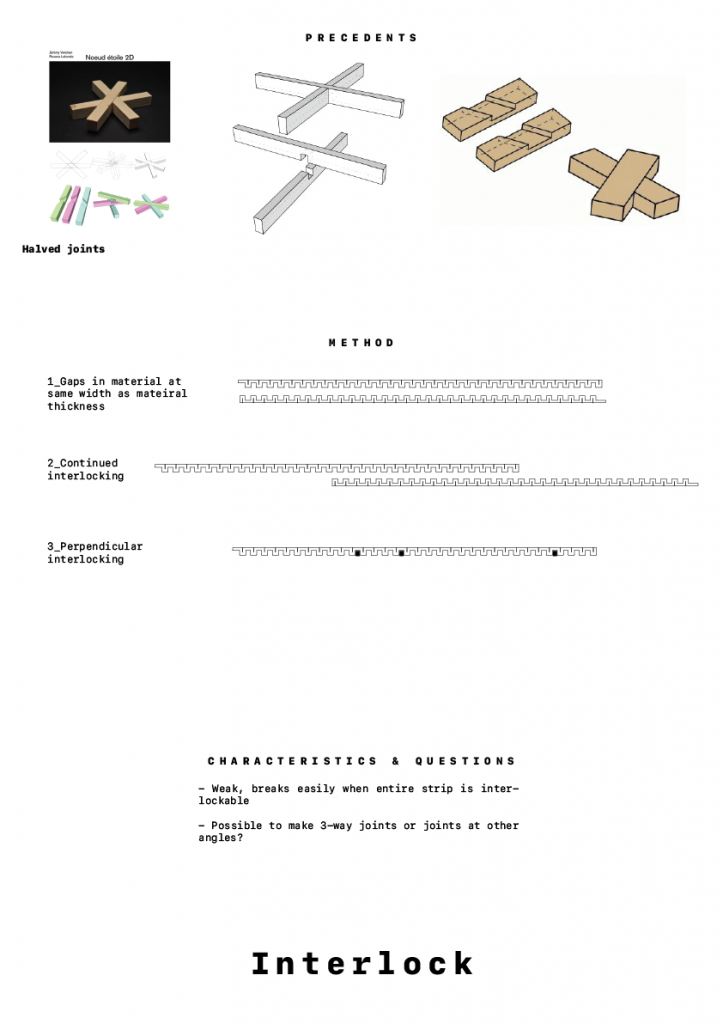
Using the laser cutter and 4 mm thick poplar wood sheets, I have experimented with different operations that produce different kinds of flexible beam-like strips.
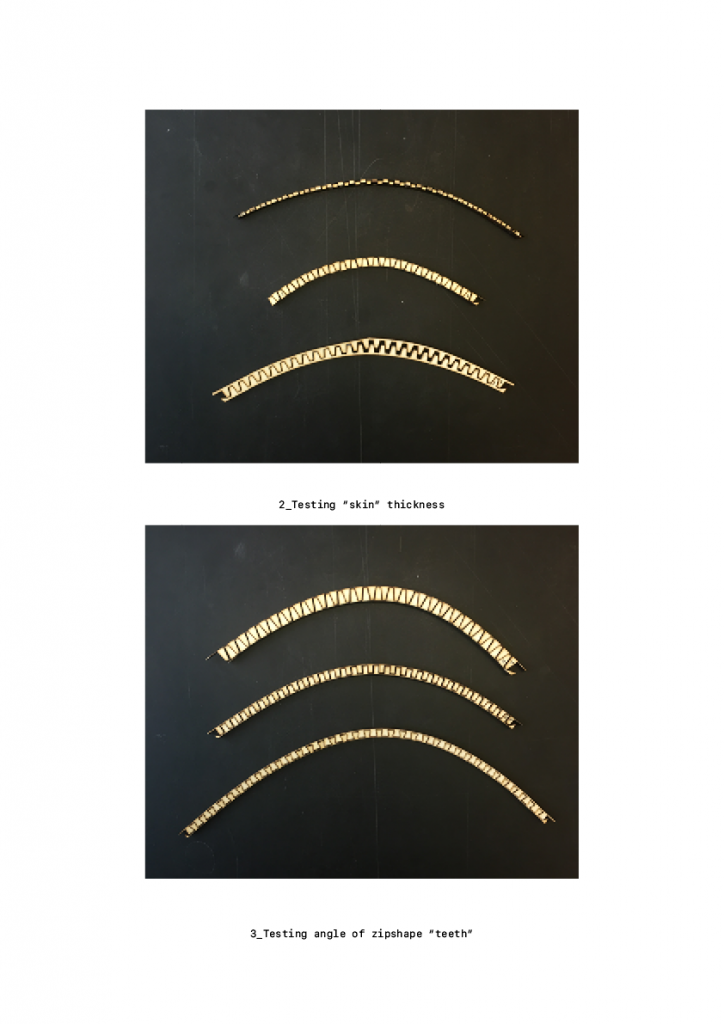
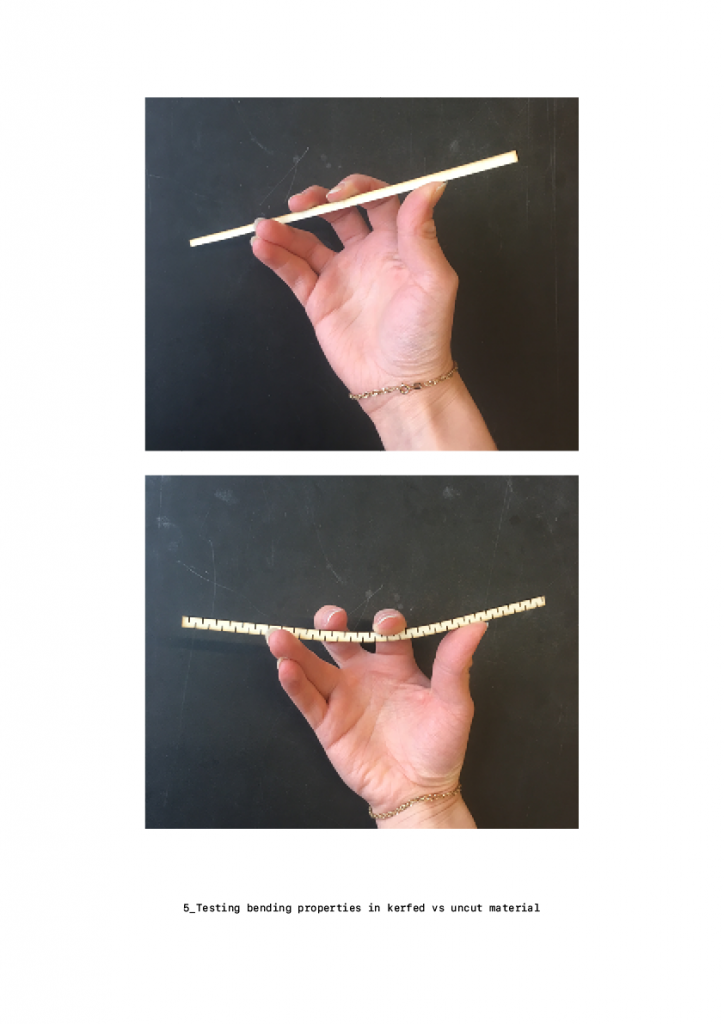
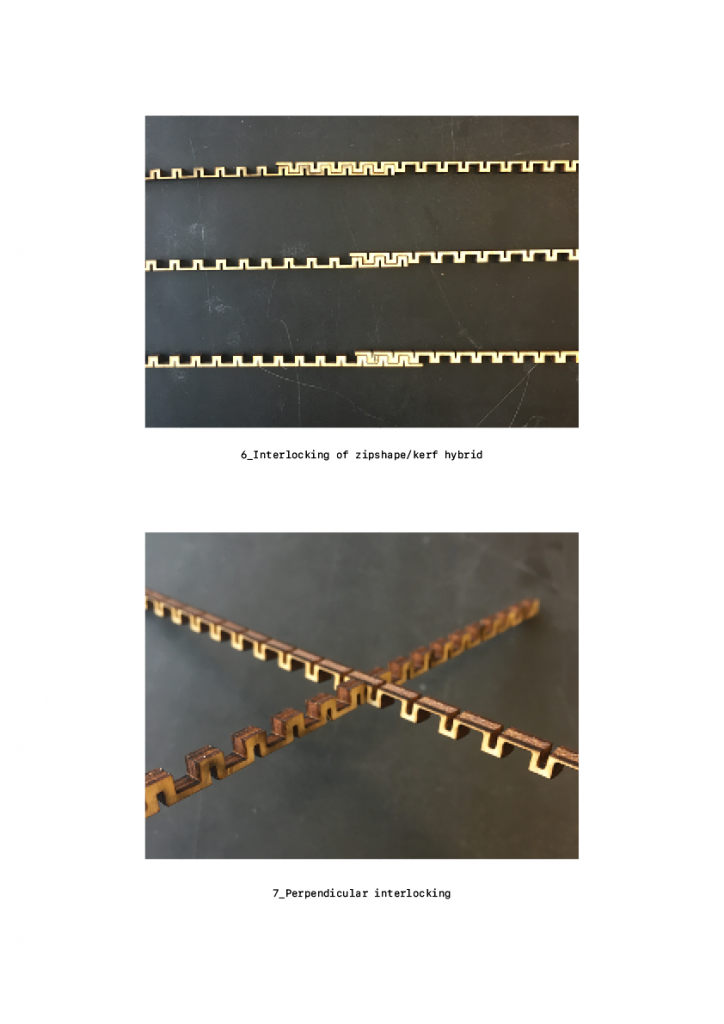
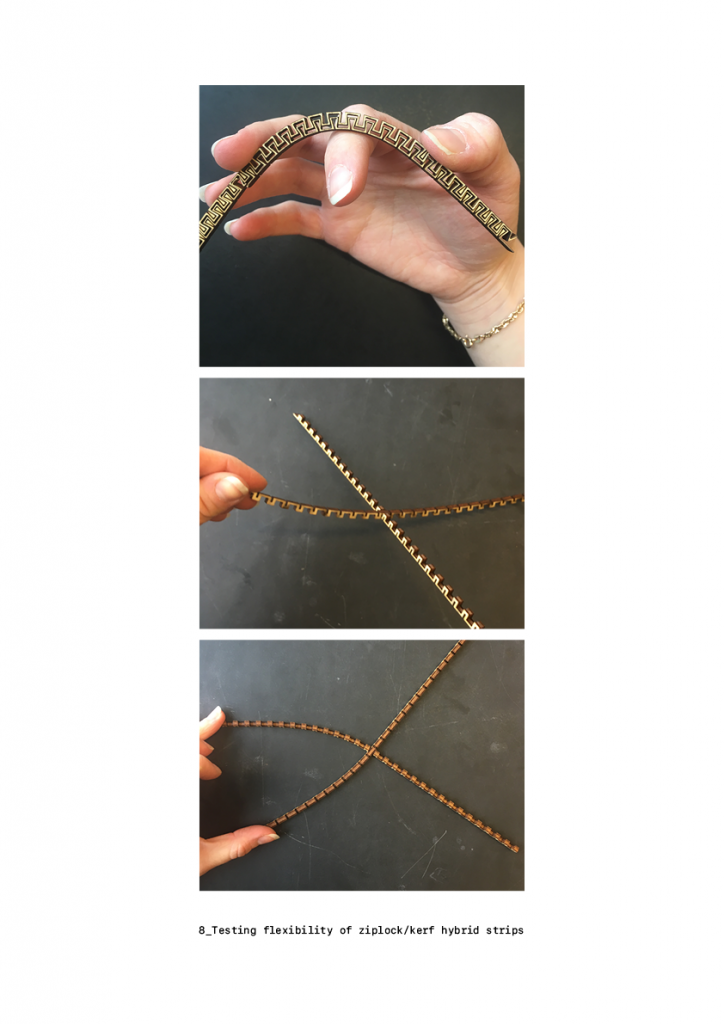
Next, I will look into combining the different processing methods to create a more complex system where the different possibilities and limitations of the three methods can support each other. I also have to narrow the investigation down from a system that can ”do anything” to a more specific part of the site and program.
